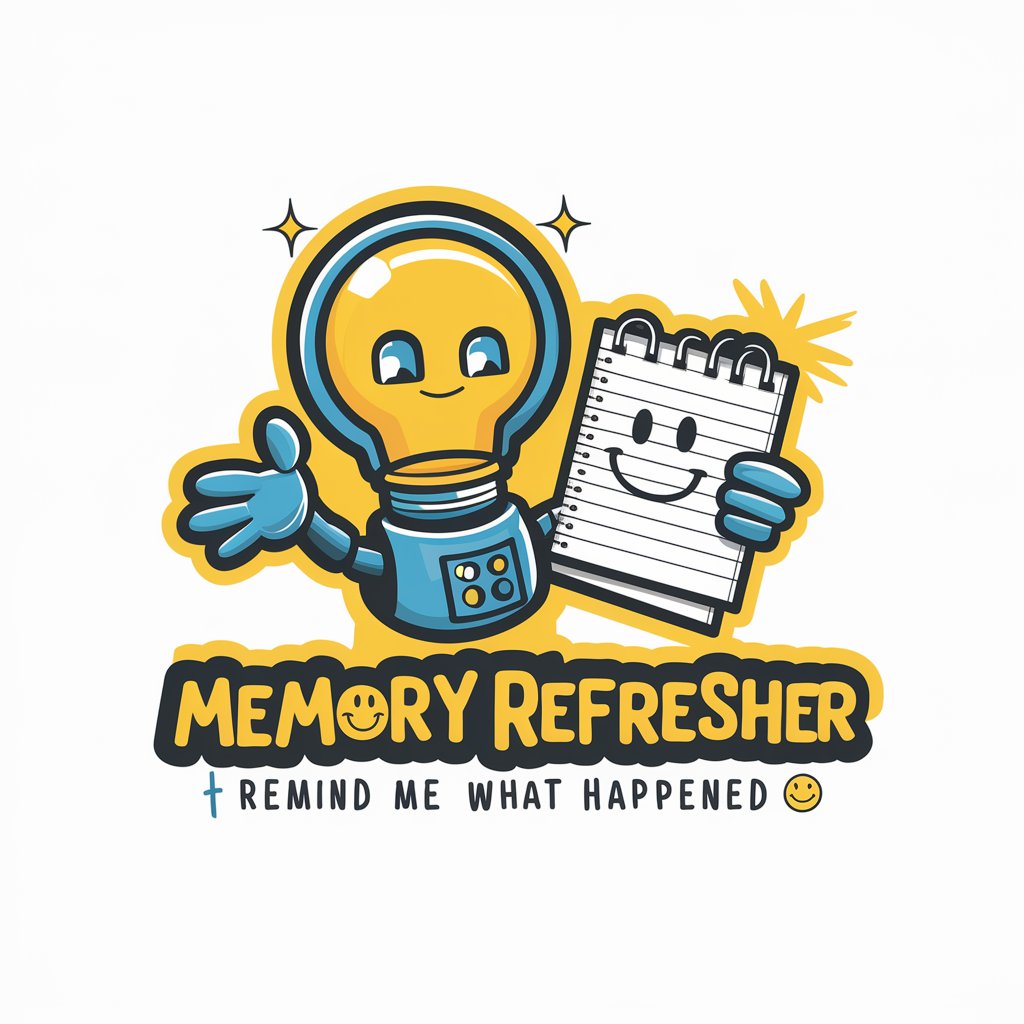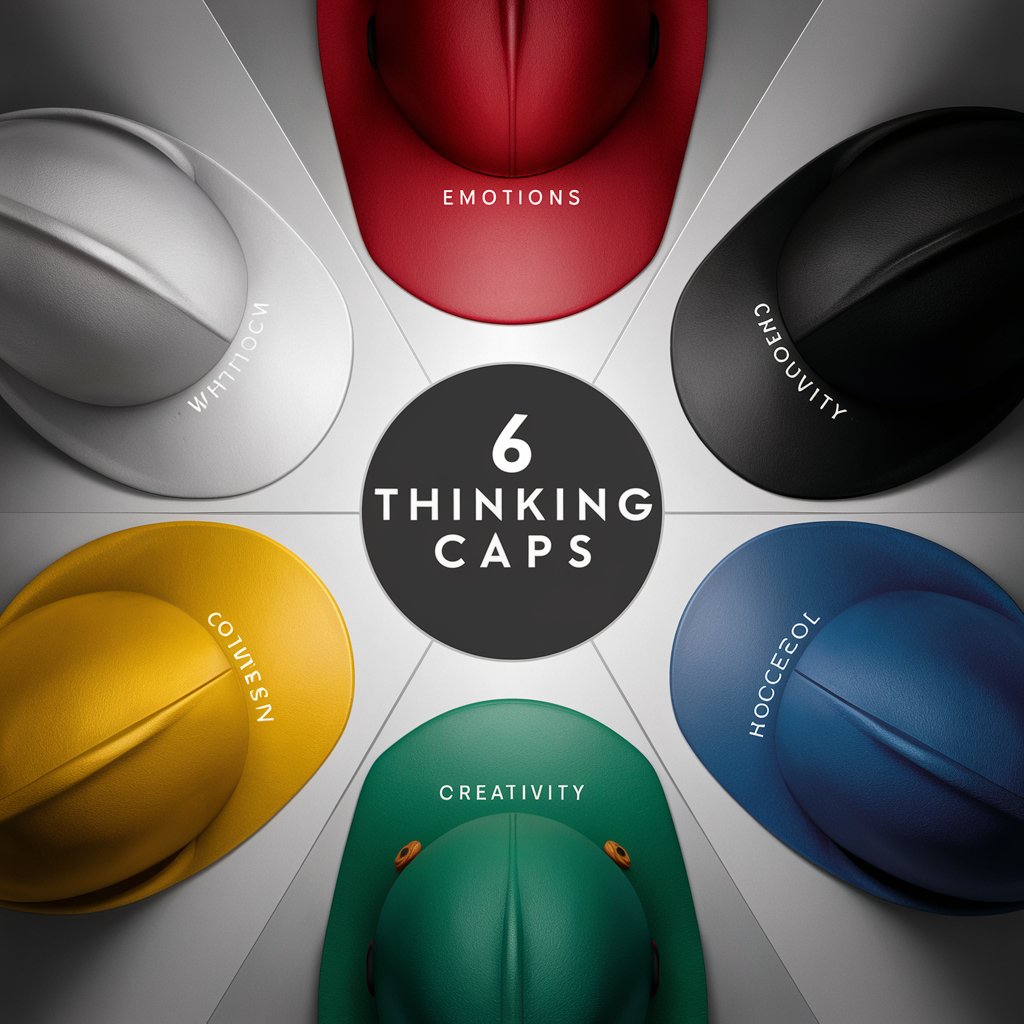
DeBono 6 Hats Decision Brainstorming - Structured Brainstorming Tool

Welcome! Shall we start our focused Thinking Hats session?
AI-powered, multifaceted decision-making support
How should we approach this problem?
What are the facts we know?
What are our gut feelings about this?
What are the positives in this situation?
Get Embed Code
Overview of DeBono 6 Hats Decision Brainstorming
DeBono 6 Hats Decision Brainstorming is a structured method designed to enhance group discussion and individual thinking. It's based on Edward de Bono's Six Thinking Hats technique, aiming to streamline thinking processes by assigning different perspectives or 'hats' to different aspects of a discussion or decision-making process. Each hat represents a unique approach: White for factual analysis, Red for emotions and feelings, Black for cautious and critical thinking, Yellow for optimism and benefits, Green for creativity and alternative solutions, and Blue for process control. This method is particularly effective in diversifying thought, preventing meetings from becoming counterproductive, and ensuring comprehensive exploration of topics. An example scenario might involve a business team deciding on a new product launch. The team would systematically go through each hat to examine data (White), express gut feelings (Red), identify potential problems (Black), highlight benefits (Yellow), brainstorm innovative features (Green), and plan the decision-making process (Blue). Powered by ChatGPT-4o。

Key Functions and Real-World Applications
Facilitating Structured Brainstorming
Example
In a marketing strategy meeting, participants use the Green Hat to generate creative advertising ideas, then switch to the Yellow Hat to explore the potential benefits of each idea.
Scenario
A team struggling with creative block utilizes the Green Hat to encourage out-of-the-box thinking, leading to the discovery of a novel campaign theme that aligns with their target audience's interests.
Improving Decision-Making
Example
A project management team applies the Black and Yellow Hats to evaluate the risks and rewards of adopting a new project management software, ensuring a balanced view.
Scenario
An organization faces a critical decision regarding technology investment. By systematically analyzing the situation with the White Hat for data gathering, then using the Black Hat for risk assessment and the Yellow Hat for potential benefits, they make a more informed choice.
Resolving Conflicts
Example
During a product development dispute, team members use the Red Hat to express their personal feelings and concerns, then the Blue Hat to guide the discussion towards a consensus.
Scenario
A team divided over two project directions uses the Six Hats method to give space to each member's viewpoints and concerns, leading to a unanimous decision that considers both emotional and logical aspects.
Target User Groups for DeBono 6 Hats Decision Brainstorming
Business Teams
Teams in corporate environments benefit from structured brainstorming to enhance creativity, solve complex problems, and make strategic decisions. The method fosters a collaborative and inclusive atmosphere, allowing for a diverse range of ideas and perspectives.
Educators and Students
Teachers can apply this method in classrooms to encourage critical thinking and problem-solving skills among students. It's particularly useful in group projects or discussions, promoting engagement and a deeper understanding of subjects from multiple angles.
Project Managers and Product Developers
Individuals in roles that require frequent problem-solving and innovation can use the Six Hats to explore new ideas, assess risks, and evaluate the viability of projects or products, leading to more effective planning and execution.

Guidelines for Utilizing DeBono 6 Hats Decision Brainstorming
Start Your Journey
Begin by exploring DeBono 6 Hats Decision Brainstorming with a free trial at yeschat.ai, where no login or ChatGPT Plus subscription is required.
Understand the Hats
Familiarize yourself with the six hats: White (facts), Red (feelings), Black (caution), Yellow (benefits), Green (creativity), and Blue (process). This understanding is crucial for effective application.
Set Your Objective
Clearly define the problem or decision you're addressing. This clarity will guide the brainstorming process and ensure relevant contributions under each hat.
Engage in Structured Brainstorming
Proceed through each hat systematically, allowing time for participants to contribute ideas, information, feelings, and cautionary advice relevant to the hat in focus.
Review and Plan
Conclude with the Blue Hat to summarize insights, weigh alternatives, and plan next steps based on the comprehensive perspectives gathered.
Try other advanced and practical GPTs
Master of Seduction
Elevate Your Seductive Communication with AI

Julius Caesar
Reviving Caesar's Wisdom with AI

Marilyn Monroe
Channeling the iconic Marilyn Monroe

Albert Einstein
Experience Einstein's Genius, AI-Powered

Michael Jackson
Empowering creativity with Michael Jackson's legacy
Globetrotter Guide
Uncover the world's hidden wonders with AI

Card Scout
Unlocking the best deals in sports cards with AI.

Brick Block Scene Creator
Bringing Scenes to Life with AI-Powered Lego Imagery

Insightful Mentor
Empowering decisions with AI insight

WordUp
Empower Your Words with AI

Buy n Large
AI-Powered Humorous Shopping Companion

Memory Refresher | Remind Me What Happened 🤷
Bringing Memories to Life with AI

Frequently Asked Questions about DeBono 6 Hats Decision Brainstorming
What is the DeBono 6 Hats Decision Brainstorming method?
It's a structured brainstorming technique that utilizes six colored hats to represent different modes of thinking. This method facilitates focused discussions, encourages diverse perspectives, and leads to clearer decision-making.
Can DeBono 6 Hats be used for individual decision-making?
Absolutely. While it excels in group settings for diverse input, individuals can use it to systematically explore different aspects of a problem or decision, ensuring a well-rounded analysis.
How does the Green Hat differ from the others?
The Green Hat is specifically dedicated to creativity and innovation. Unlike the other hats, which focus on information, emotions, caution, benefits, and process, the Green Hat encourages out-of-the-box thinking and the generation of new ideas.
Is there a recommended time limit for each hat?
While not strictly required, imposing a time limit for each hat can help keep discussions focused and efficient. The exact time can vary based on the complexity of the topic and the number of participants.
How can DeBono 6 Hats Decision Brainstorming improve team dynamics?
By assigning different roles to team members, it reduces confrontations and allows for a more harmonious and comprehensive exploration of ideas. It encourages listening, empathy, and constructive contributions from all participants.





